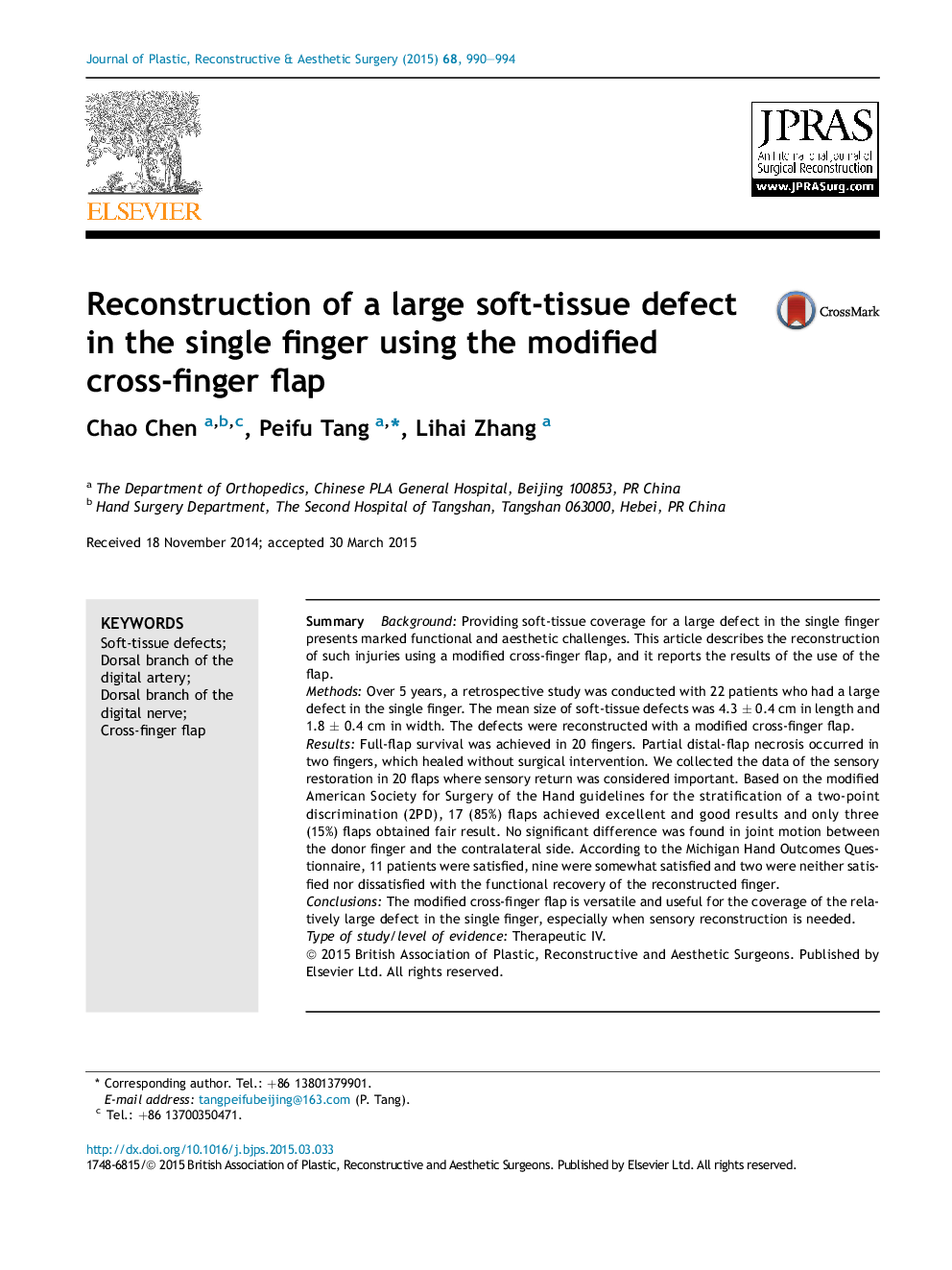| Article ID | Journal | Published Year | Pages | File Type |
|---|---|---|---|---|
| 4117256 | Journal of Plastic, Reconstructive & Aesthetic Surgery | 2015 | 5 Pages |
SummaryBackgroundProviding soft-tissue coverage for a large defect in the single finger presents marked functional and aesthetic challenges. This article describes the reconstruction of such injuries using a modified cross-finger flap, and it reports the results of the use of the flap.MethodsOver 5 years, a retrospective study was conducted with 22 patients who had a large defect in the single finger. The mean size of soft-tissue defects was 4.3 ± 0.4 cm in length and 1.8 ± 0.4 cm in width. The defects were reconstructed with a modified cross-finger flap.ResultsFull-flap survival was achieved in 20 fingers. Partial distal-flap necrosis occurred in two fingers, which healed without surgical intervention. We collected the data of the sensory restoration in 20 flaps where sensory return was considered important. Based on the modified American Society for Surgery of the Hand guidelines for the stratification of a two-point discrimination (2PD), 17 (85%) flaps achieved excellent and good results and only three (15%) flaps obtained fair result. No significant difference was found in joint motion between the donor finger and the contralateral side. According to the Michigan Hand Outcomes Questionnaire, 11 patients were satisfied, nine were somewhat satisfied and two were neither satisfied nor dissatisfied with the functional recovery of the reconstructed finger.ConclusionsThe modified cross-finger flap is versatile and useful for the coverage of the relatively large defect in the single finger, especially when sensory reconstruction is needed.Type of study/level of evidenceTherapeutic IV.
